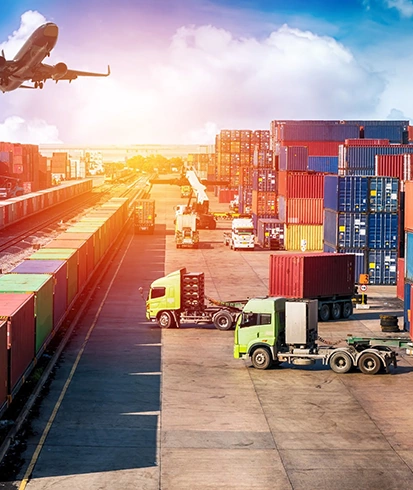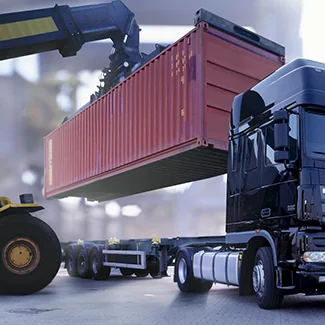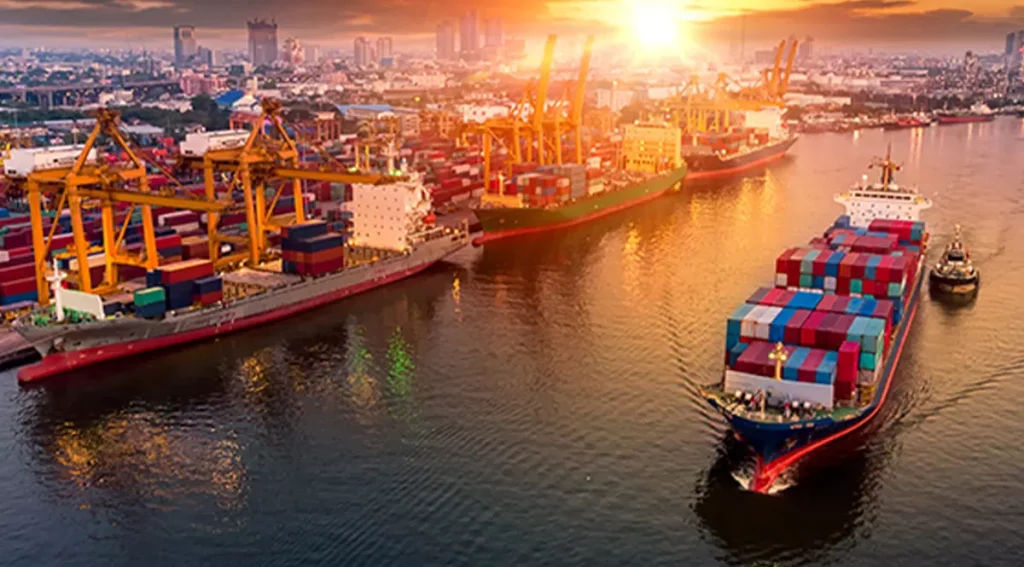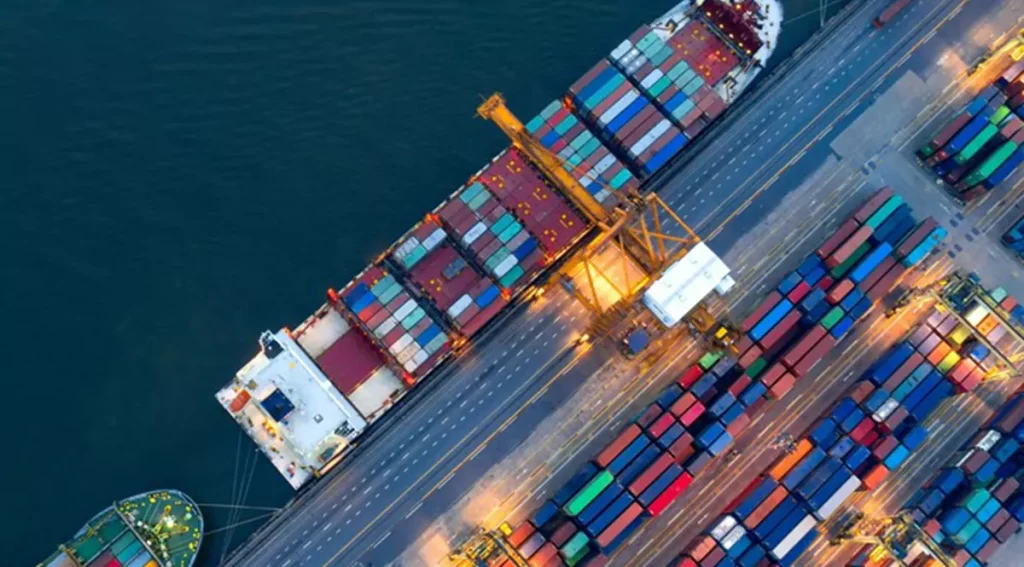karkianik
About Us
About Us
Karkianik Trading Company, with over 50 years of experience in import, export, and supply, is one of the reputable companies in the field of trade in Iran and the Middle East. The company operates in various fields, including food products, steel industries, construction materials, home appliances, refrigeration and heating parts, light and heavy automotive parts, carpets, tourism, and currency.
Karkianik Trading Company, with a specialized marketing and sales team based in Iran, Oman, and the UAE, as well as equipped infrastructure such as warehouses, offices, and stores, is recognized as one of the leading regional marketers. The company focuses on international relations and has a vast network of traders, manufacturers, suppliers, and customers worldwide.
Karkianik, with an emphasis on its core values such as quality, sustainability, and trust, strives to fulfill its motto of doing good work to create a better world.



Products

- Refrigeration


- Automotive Parts


- Home Appliances


- Steel Products


- Home Appliances


- Cosmetics


- Carpets

Services
Importing
Lorem ipsum is a placeholder text commonly used in the printing industry, generated by using nonsensical, scrambled words to mimic the visual appearance of real text. It is often used by graphic designers.
Exporting
Lorem ipsum is a placeholder text commonly used in the printing industry, generated by using nonsensical, scrambled words to mimic the visual appearance of real text. It is often used by graphic designers.
Currency
Lorem ipsum is a placeholder text commonly used in the printing industry, generated by using nonsensical, scrambled words to mimic the visual appearance of real text. It is often used by graphic designers.
Investment
Lorem ipsum is a placeholder text commonly used in the printing industry, generated by using nonsensical, scrambled words to mimic the visual appearance of real text. It is often used by graphic designers.
Contact Us

Contact Us
Emirates
Oman
Event and Article
International transportation is a key component of global trade, playing a vital role in the movement of goods between countries. Choosing the right transportation method can significantly impact the time, cost, and quality of trade. Two common methods in this regard are maritime and air transport, each with its own advantages and disadvantages. In this article, we will compare these two transportation systems.
1.Transport Speed
One of the main differences between sea and air transport is the speed of goods transfer.
- Air transport: It is the fastest method of international transport and is ideal for goods where delivery time is critical. The shipping time in this method is usually between a few hours to a few days.
- Sea transport: It has a slower speed, and the transfer of goods may take weeks. This method is suitable for goods where immediate delivery is not essential.
2. Costs:
Cost is one of the most important factors in choosing the transportation method.
- Air transport: It has higher costs due to fuel, airport fees, and weight and volume restrictions, which increase the price. This method is more commonly used for valuable and lightweight goods.
- Sea transport: It is more cost-effective and is preferred for transporting large volumes of goods with heavy weight. The lower costs of this method make it a suitable choice for less valuable goods.
3.Carrying Capacity
The carrying capacity of goods also shows significant differences.
- Air transport: It has limited capacity for carrying bulky and heavy goods. These limitations make this method more suitable for light and small items.
- Sea transport: It has a very high capacity and is suitable for transporting large volumes of goods. Cargo ships can carry thousands of tons of goods in one trip.
4.Environmental impact:
Environmental aspects are also important when choosing a transportation method.
- Air transport: It is one of the most polluting transportation methods due to high fuel consumption and the emission of greenhouse gases.
- Sea transport: Compared to air transport, it creates less pollution, but still has its own environmental impacts, particularly concerning oil spills and marine pollution.
5. Safety and Risk
The security of goods during transportation is also of great importance.
- Air transportation: It is a more secure option in terms of safety and minimizing damage to goods. Additionally, the likelihood of theft or damage is lower in this method.
- Sea transportation: It carries higher risks, especially for goods that may be affected by weather conditions or port delays.
6. Flexibility in route and destination:
- Air transportation: Due to the limited number of airports and air routes, it has less flexibility.
- Sea transportation: It has more flexibility and can access various ports around the world.
Conclusion
The choice between sea and air transport depends on the type of goods, budget, delivery time, and business priorities. If speed and security are more important, air transportation is the better option. However, for large and heavy goods that require lower costs, sea transport is a more suitable choice. A thorough assessment of needs and business characteristics can help make a better decision.
Exporting Iranian products to global markets is one of the most important ways to develop the economy and increase the country’s foreign revenue. Despite Iran’s competitive advantages in producing many products such as carpets, saffron, pistachios, handicrafts, and petrochemical products, success in exports requires understanding markets, adhering to international standards, and careful planning. In this article, we will explore key points for success in exporting Iranian products to global markets.
1.Identifying Target Markets
One of the most important steps in exporting is researching target markets.
- Identifying consumer needs and preferences: For success, products must be offered that align with the needs and preferences of customers in the target market.
- Competitor analysis: Examining the strengths and weaknesses of competitors helps in adopting better strategies for entering and establishing a presence in the market.
- Competitor analysis: Examining the strengths and weaknesses of competitors helps in adopting better strategies for entering and establishing a presence in the market.
2.Complying with international standards and regulations
- Quality standards: Exported goods must comply with the quality and hygiene standards of the target markets. Failure to meet these standards can result in the return of goods or heavy penalties.
- Professional packaging: Product packaging should not only be visually appealing but also provide sufficient information in the language of the destination country and be resistant to international transportation.
- Required certifications: Obtaining certificates such as the certificate of origin, health permits, and international certifications is of great importance.
3. Effective marketing
Marketing plays a vital role in the success of exports.
- Branding: Creating a reputable and recognized brand can build customer trust and increase the value of products.
- Participation in international trade fairs: Trade fairs are an excellent opportunity to showcase products, find new customers, and build business networks.
- Using digital tools: B2B websites, social media, and digital advertising are powerful tools for accessing global markets.
4. Choosing the right transportation and logistics methods.
The transportation of goods to global markets must be carefully planned.
- Choosing the right method: Depending on the type of goods and destination, the appropriate mode of transport—air, sea, or land—should be selected.
- Cargo insurance: Valid insurance policies should be obtained to protect goods against transportation risks.
- Supply chain management: Coordination between production, warehousing, and shipping reduces costs and increases efficiency.
5. Financial management and payment methods
- Clear contracts: Export contracts should be drafted accurately and with full details.
- Secure payment methods: Using secure payment methods like Letters of Credit (L/C) reduces financial risk.
- Cost control: Managing production and transportation costs helps make the final price more competitive.
6. International trade relations
Establishing and maintaining sustainable business relationships with foreign customers and partners is one of the key factors for success in exports. Responding quickly to customers, offering after-sales services, and building mutual trust are of significant importance.
Conclusion
Successful export of Iranian products to global markets requires thorough research, planning, and precise execution. By understanding markets, adhering to standards and regulations, utilizing marketing tools, and effectively managing the supply chain, the position of Iranian products in international markets can be strengthened, contributing to the country’s economic development.
Importing, as a vital component of international trade, plays a significant role in meeting the domestic needs of countries. In Iran, imports not only create opportunities for economic growth and access to advanced technologies but also come with challenges that require proper management. This article examines the challenges and opportunities of importing in Iran.
Challenges of Importing in Iran
1. Economic Sanctions and International Restrictions
One of the biggest challenges of importing in Iran is the economic and banking sanctions, which restrict financial and trade relations with foreign companies. These restrictions increase import costs and prolong the time required to access goods.
2. Complex Laws and Regulations
Import laws in Iran, including high customs tariffs, bans on certain goods, and complex administrative processes, often hinder the facilitation of imports. Frequent changes in laws and regulations also create uncertainty and make planning difficult for importers.
3. Currency Fluctuations
Severe fluctuations in exchange rates in Iran directly affect import costs. A sudden increase in currency prices can lead to significant financial losses for importers and impact the final prices of goods in the domestic market.
4. کمبود زیرساختهای حملونقل و لجستیک
The lack of transportation infrastructure, particularly in the maritime and rail sectors, increases logistics costs. This issue is especially noticeable when transporting goods from ports to the interior of the country.
Opportunities of Importing in Iran
1. Meeting Domestic Needs
Importing to Iran allows the country to secure goods and raw materials that cannot be produced domestically or are not economically viable. This contributes to the development of local industries and helps maintain competitiveness.
2. Access to Advanced Technologies
Through imports, Iran can access the latest technologies and equipment in various fields, including industry, medicine, and agriculture. This leads to improved efficiency and economic growth.
3. Job Creation in Related Sectors
Imports activate various sectors, including transportation, customs clearance, customs services, and distribution, which helps create employment in these areas.
4. Diversity in the Domestic Market
Importing a variety of goods increases competition in the domestic market and provides consumers with more options. This leads to improved quality of products and services.
Proposed Solutions for Managing Challenges and Capitalizing on Opportunities
- Stabilizing Exchange Rates:Controlling currency fluctuations through effective financial and economic policies can help reduce import costs.
- Improving Logistics Infrastructure:
Investing in ports, rail, and road transportation can reduce costs and increase the speed of imports. - Clarifying Laws and Regulations:
Developing stable and transparent import regulations increases trust and confidence among economic actors. - Utilizing International Capacities:
Establishing trade agreements with various countries can facilitate access to foreign markets and reduce import barriers.
Conclusion
Importing in Iran comes with many challenges and opportunities. Proper management of these challenges and smart utilization of opportunities can play a key role in strengthening the country’s economy. By reforming regulations, improving infrastructure, and enhancing international relations, imports can be transformed into an effective tool for sustainable development.
Export is one of the most important tools for expanding international trade and contributing to the economic development of countries. To succeed in exporting, awareness of the key steps and important aspects of the process is essential. In this article, we will review the main steps of exporting, from document preparation to shipping goods.
1. Market Research and Product Selection
The first step in exporting is researching target markets and identifying their needs. Choosing the right product, one that has high demand and the ability to compete in the international market, is of great importance. For this purpose, export data, trade exhibitions, and chambers of commerce can be utilized.
2. Obtaining a Business Card (Customs Card)
A business card (کارت بازرگانی) is a license issued by the Chamber of Commerce and is required for international trade activities. This card must be issued in the name of either a natural person or a legal entity, and without it, exporting is not possible.
3. Preparing Legal Documents
The following documents are required for exporting goods:
- Proforma Invoice: Includes detailed information about the goods, price, payment terms, and delivery conditions.
- Certificate of Origin: Confirms that the goods were produced in the exporting country.
- Packing List: Includes details of the packaging of the goods.
- Insurance Certificate: Provides coverage for potential risks during transportation.
4. Marketing and Finding Buyers
After selecting the product, you need to identify potential buyers. For this, you can use international trade shows, B2B websites like Alibaba and Global Sources, as well as connect with chambers of commerce.
5. Signing an Export Contract
At this stage, the export contract is negotiated with the buyer. The contract should include detailed information such as product specifications, price, delivery terms (Incoterms), shipping schedule, and payment methods.
6. Preparing Goods and Quality Inspection
After the agreement, the goods must be produced or procured according to the specifications of the contract. Quality inspection by reputable organizations such as SGS is essential to ensure that the products comply with international standards.
7. Customs Formalities
The goods must pass through the customs of the exporting country. For this, an export declaration is prepared, and the necessary documents are submitted to customs. Customs duties are also paid at this stage.
8. Selecting the Shipping Method
The method of transporting goods (sea, air, land, or rail) should be chosen based on the type of goods, delivery time, and costs. Coordination with reputable transportation companies is crucial.
9. Shipping the Goods to the Destination
After completing all the steps, the goods are shipped to the destination. At this stage, tracking the shipment and ensuring the delivery to the buyer is essential to guarantee customer satisfaction.
10. Receiving Payment and Export Currency
Finally, after the goods are delivered, payment is made according to the contract. Proper management of export currency and its deposit into the country’s banking system is also part of this process.
Conclusion
Export is a complex and time-consuming process that requires awareness, precision, and careful planning. By following the steps outlined and seeking guidance from trade experts, you can have a successful experience in this field.








